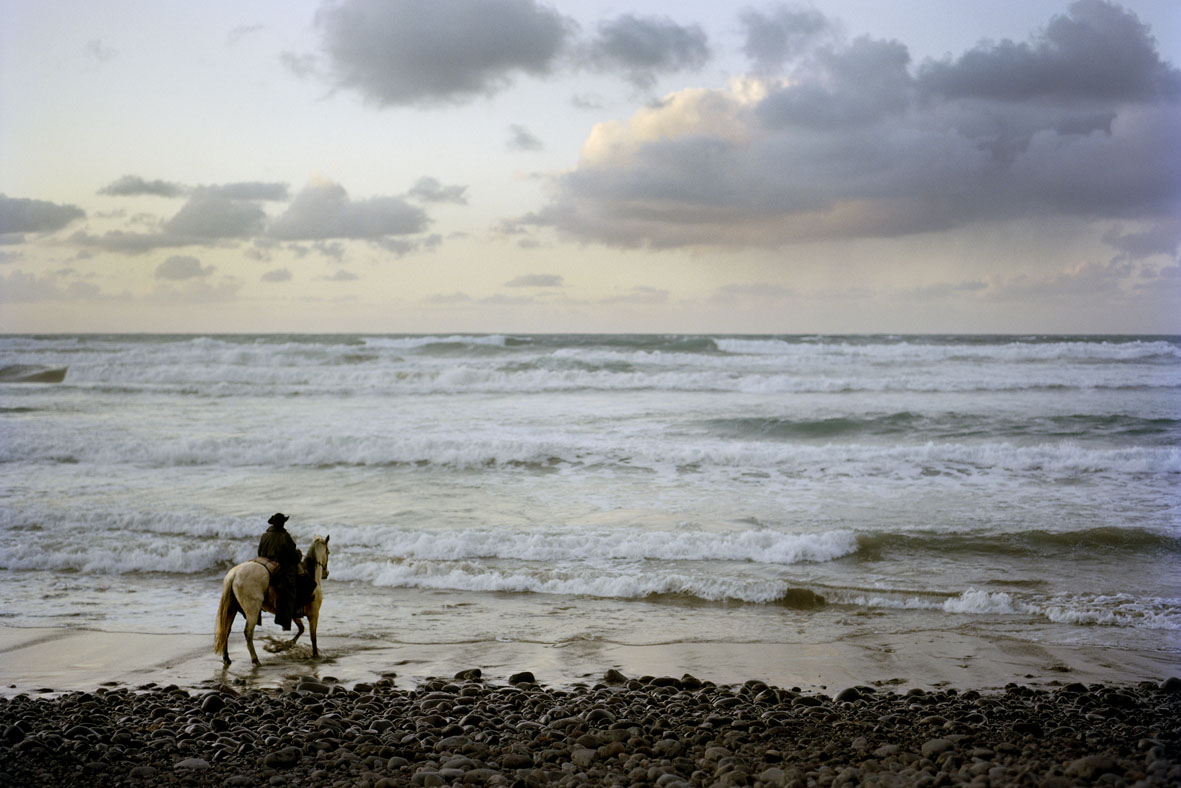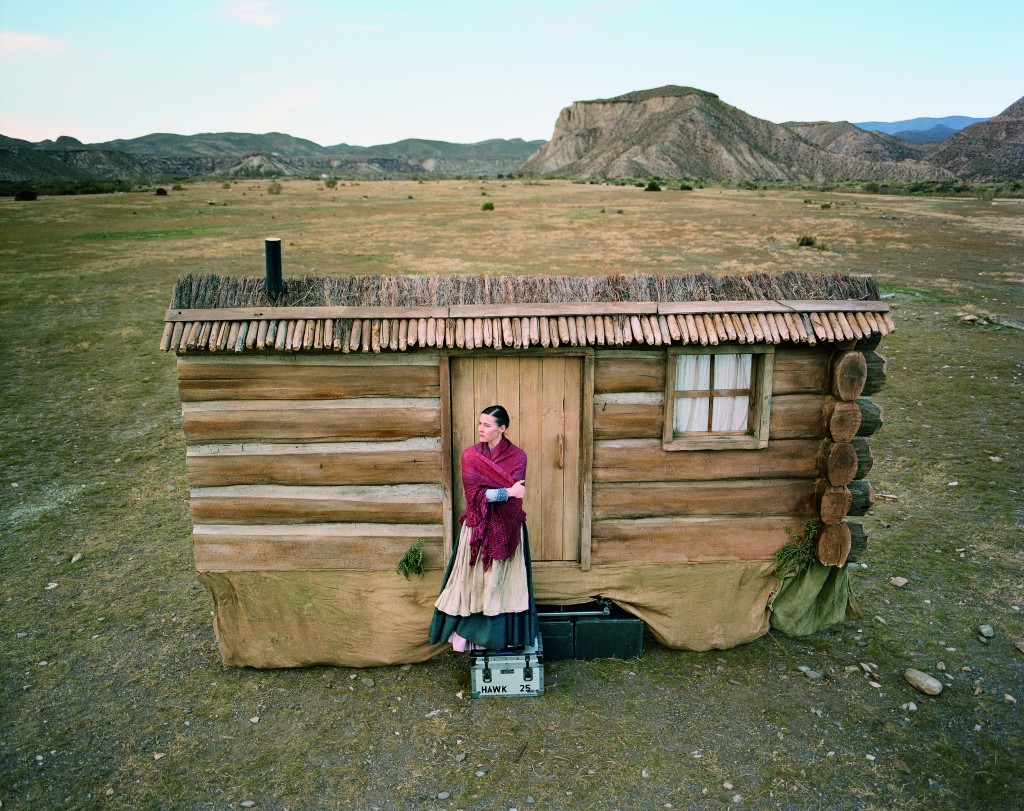
Tumbleweeds drift past clapboard buildings. A lone rider crosses dusty mountains. A woman waits by a cabin door.
The scenes are not only familiar: they are ritual and legend, fable and allegory, the mythic building blocks of the Hollywood Western. In “American Night” (2009), German artist Julian Rosefeldt turns an amused yet critical eye to the motifs and conventions of the Western film — as hard and polished as a pearl-grip pistol — and to their pervasive influence within American culture, politics and even foreign policy.
This spring and summer, the Mildred Lane Kemper Art Museum at Washington University in St. Louis will present “Julian Rosefeldt: American Night.” The five-channel installation combines original footage — shot partially in Andalusia, Spain, a location for Sergio Leone’s “For a Few Dollars More” (1965) — with dialogue drawn from classic Westerns, political speeches, hip-hop recordings and other sources.
Known for lush visuals and elaborate staging, Rosefeldt’s installations occupy a unique place at the juncture of narrative film and installation art — at once paying homage to cinematic history and reflecting upon the means of production. “American Night,” shot in widescreen, 16mm CinemaScope, replicates the look and feel of genre films from the 1950s, ’60s and ’70s. Several performers bear striking resemblances to actors of the period, such as Charles Bronson, Sam Eliott and Kris Kristofferson.
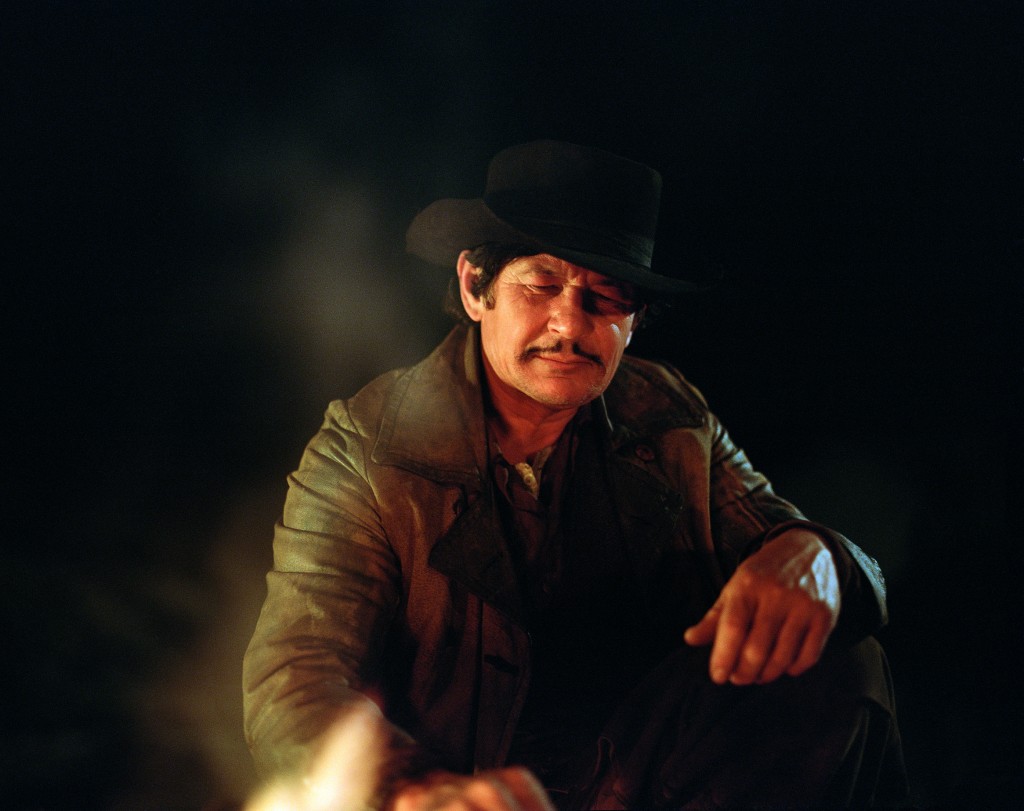
Yet “American Night” deploys its Western trappings to shrewd purpose. The title refers to a filtering technique that allows cinematographers to shoot evening scenes during the day — and to “La Nuit américaine” (1973), François Truffaut’s influential meditation on filmmaking. The five screens are arranged in a semicircle, like sitters around a campfire. At center, Rosefeldt’s cowboys solemnly quote John Wayne and Charlton Heston before launching into gleeful impressions of George W. Bush and 50 Cent.
On other screens, the lone rider nervously confronts the ocean, as if unsure of how to proceed, while the woman’s cabin rolls away, a set mounted on track. Raucous saloon-goers cheer a puppet show debate between Bush and Barack Obama. Modern combat troops, dressed in fatigues, exit a helicopter and storm a ghost town, assault rifles held high and ready.
The effect is playful but pointed, revealing how frontier artifice continues to shape American self-image and ideals of masculinity while legitimizing notions about the necessity — and redemptive promise — of violence.
“Out here a man settles his own problems,” says a cowboy, quoting John Wayne.
“Whether we bring our enemies to justice or justice to our enemies, justice will be done,” responds another, quoting George W. Bush.
“I say the only technologies worth having are a 6-gun and a movie camera,” adds a third, quoting film director Sam Peckinpah.
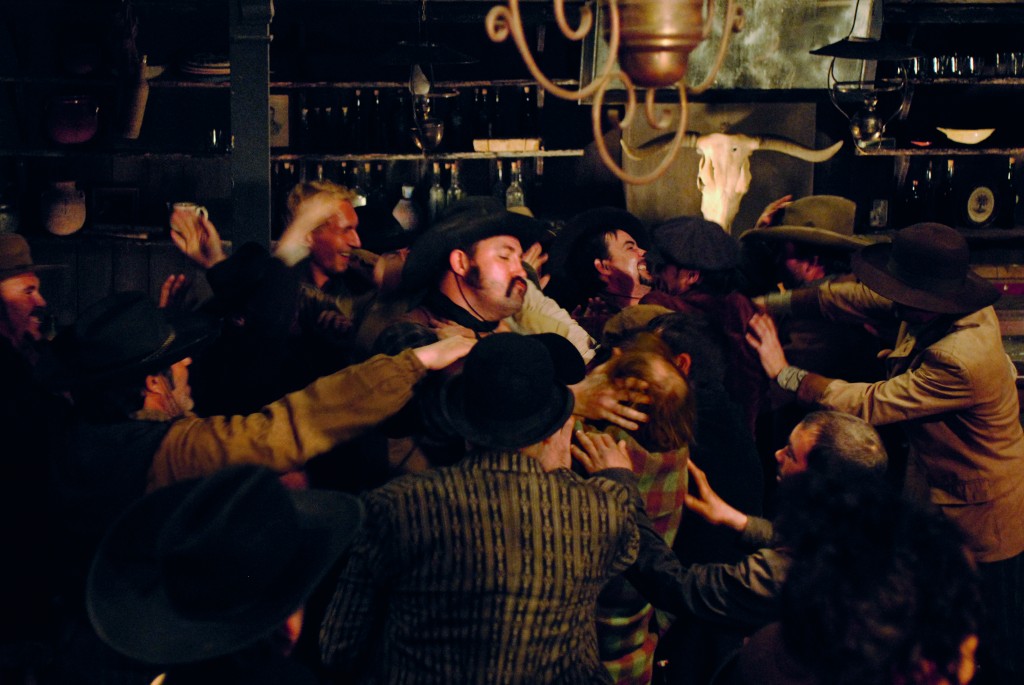
About the artist
Born in Munich in 1965, Rosefeldt creates complex multichannel film installations that combine sly satire and absurdist irony with political and philosophical rumination.
Though early projects, such as “News” (with Piero Steinle, 1998), were largely constructed from found footage, Rosefeldt’s work since 2000 is notable for its lavish production and dizzying precision. “Stunned Man (Trilogy of Failure)” (2004) shows a bemused figure caught in an almost Chaplin-esque cycle of destruction and and rebuilding. “Lonely Planet” (2006) centers on a backpacking Westerner who wanders through a series of Bollywood set pieces. “Deep Gold” (2013-14) adds a new chapter to — and suggests a feminist reading of — Luis Buñuel’s surrealist comedy “L’Age d’Or” (1930).
Rosefeldt’s work has been exhibited at galleries, museums and festivals around the world, including the Bienal de São Paulo; P.S.1 Contemporary Art Center, New York; ARNDT Berlin; and the Tate Modern, London. His work is included in the permanent collections of the Museum of Modern Art, New York; The Saatchi Collection, London; the Goetz Collection, Munich; and the Berlinische Galerie, Berlin.
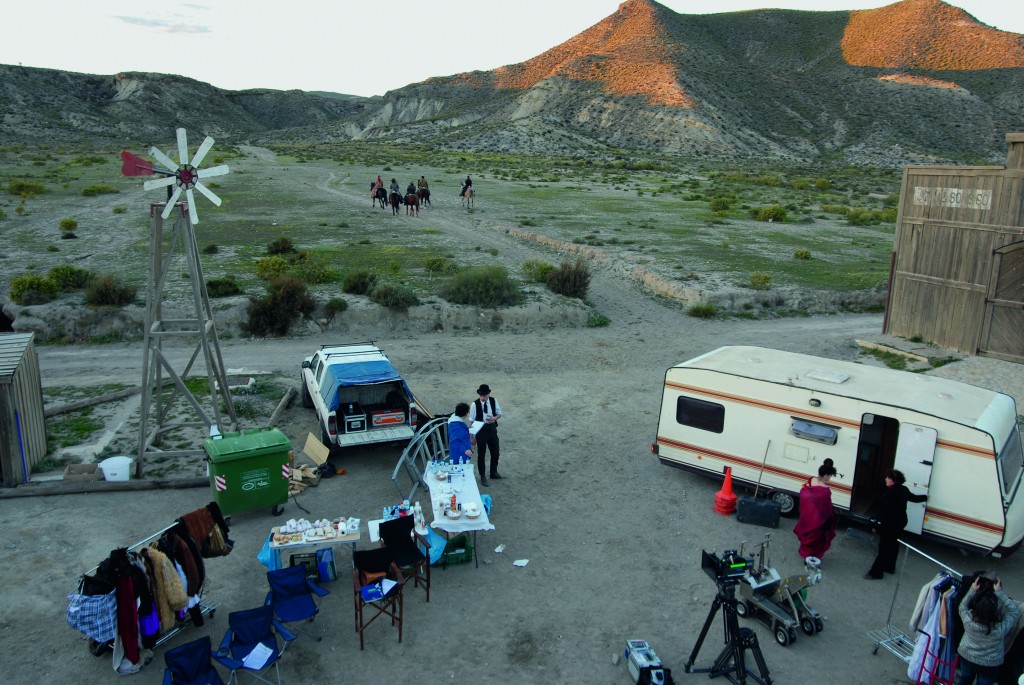
Organizers and support
“Julian Rosefeldt: American Night” is curated by Richard James Krueger, associate professor of art in the Sam Fox School of Design & Visual Arts.
Support for the exhibition is provided by the William T. Kemper Foundation, Elissa and Paul Cahn, Nancy and Ken Kranzberg, the Hortense Lewin Art Fund, and members of the Mildred Lane Kemper Art Museum.
Mildred Lane Kemper Art Museum
“Julian Rosefeldt: American Night” opens with a reception from 6:30 to 9 p.m. Friday, March 4. It remains on view through August 7 in the Kemper Art Museum’s Garen Gallery.
A lecture by Rosefeldt will precede the opening at 5:30 p.m. in Steinberg Auditorium. The lecture is presented as part of the Sam Fox School’s spring Public Lecture Series. Steinberg Auditorium is located adjacent to the museum in Steinberg Hall.
The Kemper Art Museum is located on Washington University’s Danforth Campus, near the intersection of Skinker and Forsyth boulevards. Regular hours are 11 a.m.-5 p.m. daily except Tuesdays and 11 a.m.-8 p.m. the first Friday of the month. The museum is closed Tuesdays and university holidays.
For more information, call 314-935-4523; visit kemperartmuseum.wustl.edu; or follow the museum on Facebook, Twitter and Instagram.
